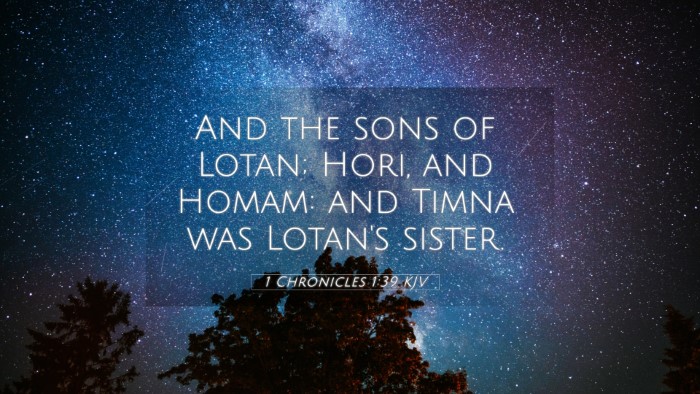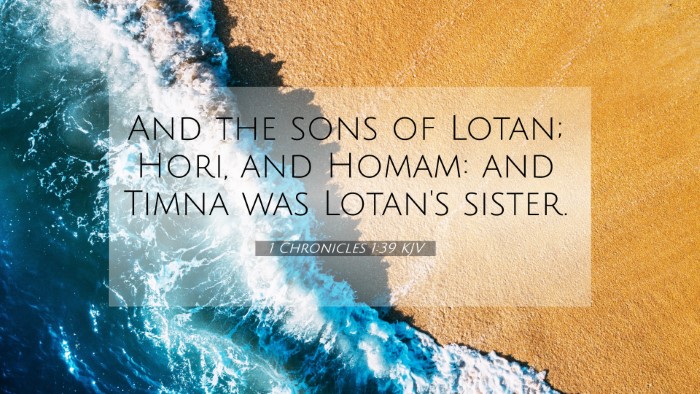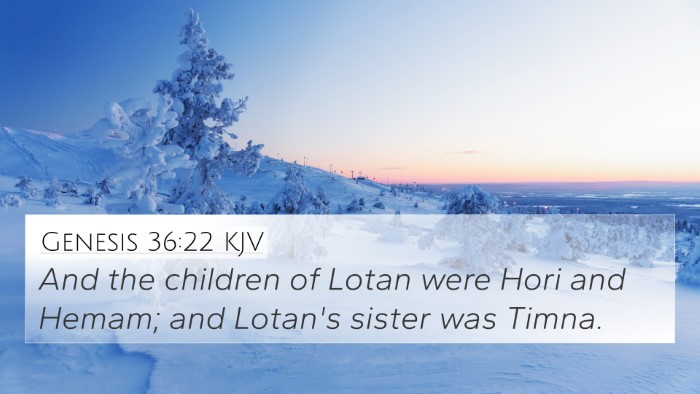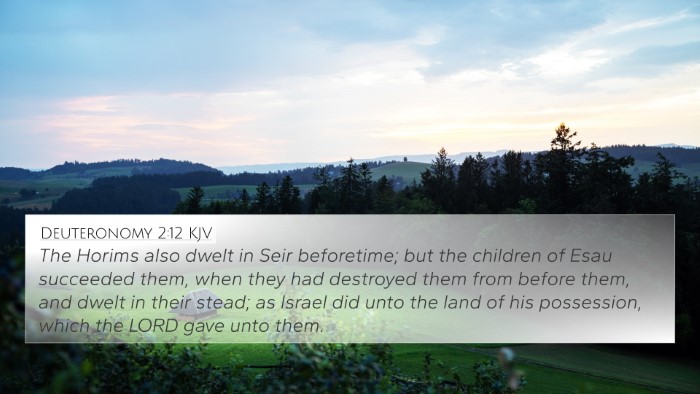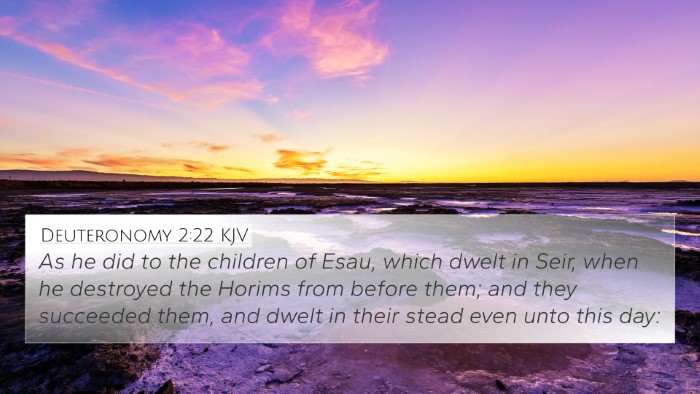Understanding 1 Chronicles 1:39
Verse: 1 Chronicles 1:39 - "The sons of Esau; Eliphaz, Reuel, and Jeush, and Jaalam, and Korah."
Overview of 1 Chronicles 1:39
This verse provides a brief lineage of Esau, the patriarch and brother of Jacob, listing his sons as part of the genealogical records maintained in the Scriptures. Such genealogies are not only historical but also hold significant theological implications for understanding the Hebrew narrative and its connections to other biblical texts.
Commentary Insights
Matthew Henry Commentary
Matthew Henry notes that genealogies in the Bible serve the purpose of affirming the historical legitimacy of narratives. The sons of Esau represent important figures in the context of the Edomites, illustrating God's sovereignty over nations. Each son mentioned would later play a crucial role in the expansion and development of Edomite tribes.
Albert Barnes Commentary
Barnes emphasizes the significance of these names in understanding the lineage of Edom. He points out that Eliphaz, being prominently mentioned, corresponds to figures reflected in other parts of Scripture. The listing of these sons is crucial for the understanding of the ongoing relationship between Israel and Edom, highlighting both conflict and connection.
Adam Clarke Commentary
Clarke provides a more detailed analysis of the individual sons, including their eventual roles and the implications for future interactions with Israel. He notes that these genealogies set the stage for understanding the territorial and familial disputes that would arise, particularly between the descendants of Esau and Jacob.
Connecting Themes
The genealogical elements present in 1 Chronicles 1:39 echo throughout the Bible, especially in narratives concerning conflict, inheritance, and divine purpose. The connections between these verses facilitate an understanding of biblical themes, particularly regarding:
- Divine Covenant: The line of covenant through Jacob and Esau's relationship.
- National Identity: The formation of Edom as a nation distinct from Israel.
- Conflict and Reconciliation: The historical backdrop of tension between the descendants of Esau and Jacob.
Cross-Referencing Biblical Texts
Analyzing 1 Chronicles 1:39 through a cross-reference system reveals its connections to several other important verses:
- Genesis 36:4-5: This passage details the descendants of Esau, expanding on the genealogical record.
- Malachi 1:2-3: The Lord states His love for Jacob and hatred for Esau, underlining the theme of divine choice.
- Romans 9:13: Paul references the tension between these two brother nations to discuss divine sovereignty.
- Hebrews 12:16-17: Esau’s character and choices are highlighted, presenting lessons on spiritual inheritance.
- Matthew 1:2: The genealogy of Jesus emphasizes Abraham, Isaac, Jacob, and the distinction from Esau.
- Obadiah 1:10-14: A prophetic reference discussing the fall of Esau’s descendants and their enmity towards Israel.
- Jeremiah 49:7-10: Prophetic discourse on Edom’s fate tied to its roots in Esau.
Thematic Bible Verse Connections
To fully appreciate the layers of meaning in 1 Chronicles 1:39, it is vital to examine thematic connections throughout the Scripture related to lineage, promise, and conflict. These include:
- Promised Land Inheritance: The struggle for the Promised Land highlights the friction between the descendants.
- Divine Sovereignty: The selection of Israel over Edom reflects broader theological themes of grace and judgment.
- Restoration and Hope: The narrative is not only about conflict but potentially about reconciliation and restoration in God's plan.
Conclusion
1 Chronicles 1:39 serves a dual purpose—the preservation of genealogical records and the theological reflection on the consequences of familial choices in the context of God’s overarching plan for humanity. By cross-referencing this verse with others, we gain richer insights into biblical narrative, showing that every name and genealogy is part of a larger story of redemption, conflict, and ultimately, divine resolution.

